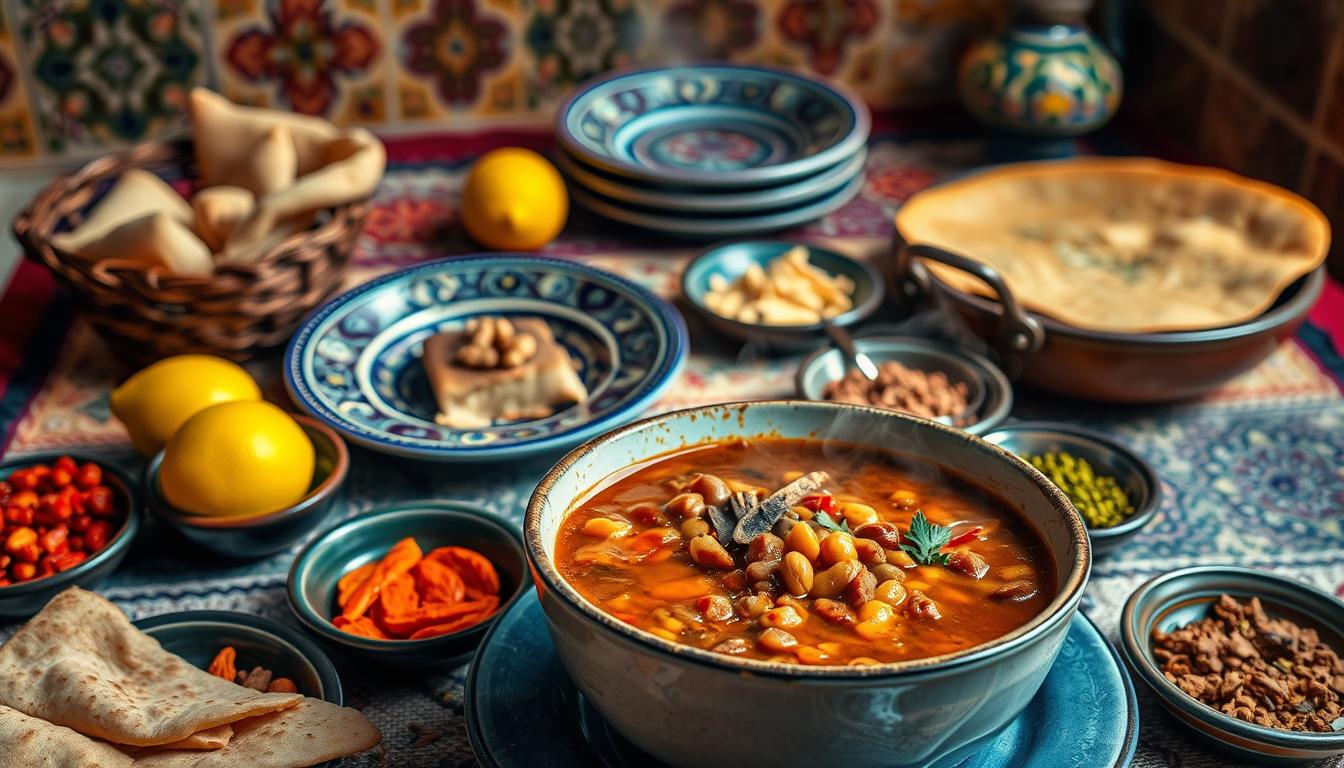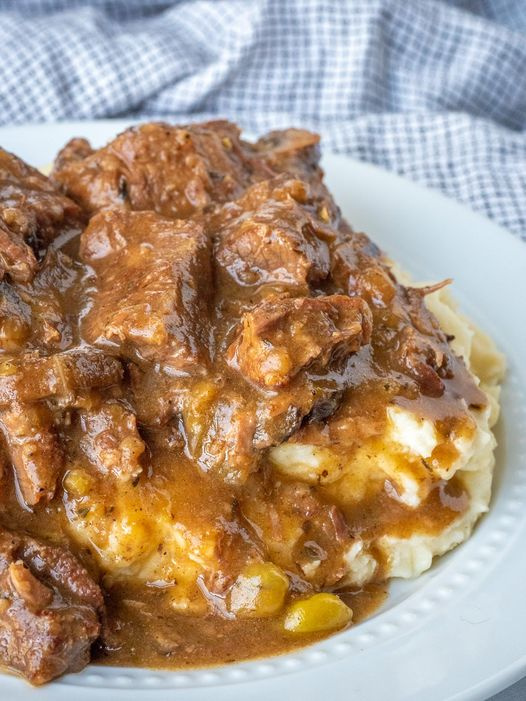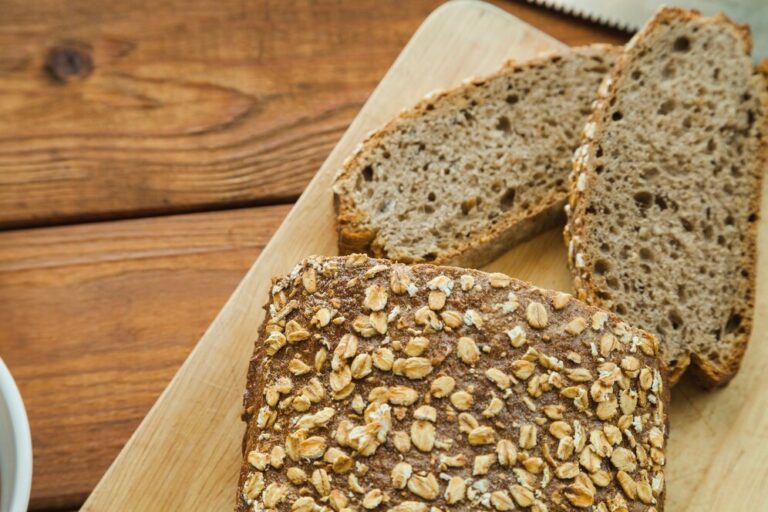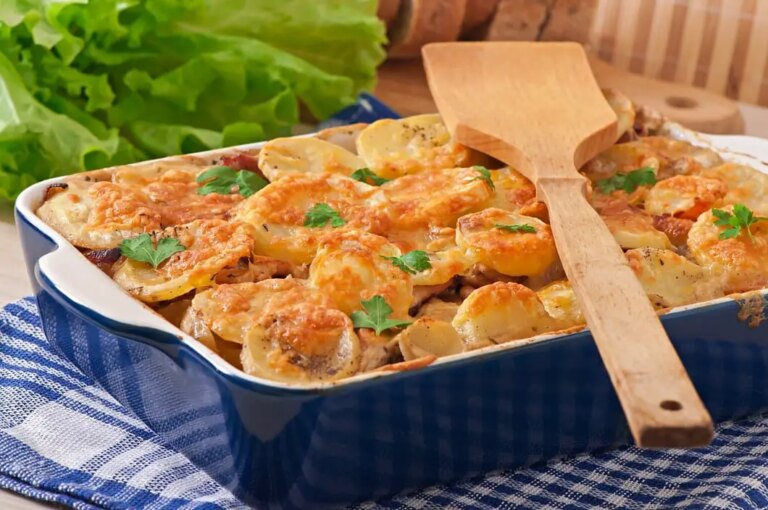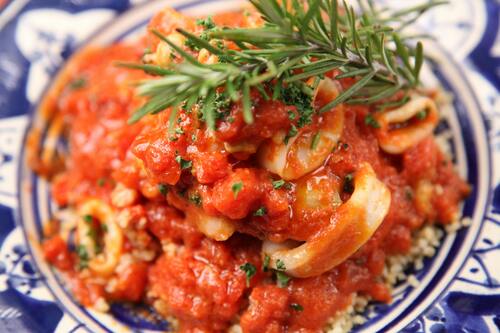Moroccan Harira
Imagine a warm, comforting bowl of goodness that embodies the rich culinary heritage of North Africa. Traditional Moroccan soup, known as Harira, is a staple in many North African households, and for good reason. This nourishing dish is not only delicious but also steeped in cultural significance.

This hearty soup is a perfect blend of ingredients, carefully crafted to create a truly satisfying experience. With its roots in North African cuisine, Harira has become a beloved dish around the world.
Key Takeaways
- Understanding the cultural significance of Harira in North African cuisine
- Exploring the traditional ingredients used in this Moroccan soup
- Learning how to prepare Harira for a delicious and nutritious meal
- Discovering the health benefits associated with this traditional dish
- Appreciating the role of Harira in North African culture and traditions
The Rich Heritage of Moroccan Cuisine
Moroccan cuisine is a rich tapestry woven from the threads of North African culinary traditions. This diverse culinary heritage has been shaped by various cultural influences, including Mediterranean, Arab, and Berber cuisines.
North African Culinary Traditions
North African cuisine is known for its bold flavors and spices. Moroccan cooking has been influenced by its geographical location, with the Mediterranean Sea to the north and the Sahara Desert to the south. This unique blend of influences has resulted in a distinct culinary identity. The use of ingredients like olives, olive oil, and citrus fruits reflects the Mediterranean impact, while the incorporation of spices and chilies highlights the African and Arab influences.
The Role of Soups in Moroccan Food Culture
Soups play a significant role in Moroccan food culture, particularly during the cold winter months. Traditional Moroccan soup, like Harira, is not only a comfort food but also a staple during special occasions and gatherings. Harira is a hearty soup made with tomatoes, lentils, chickpeas, and spices, symbolizing the rich culinary heritage of Morocco.
What is Moroccan Harira?
The traditional Moroccan soup, Harira, is not just a meal; it’s an experience that brings people together, reflecting the country’s rich heritage. This comforting and nourishing soup has been a staple in Moroccan cuisine for centuries, enjoyed by families and communities alike.
Origins and Cultural Significance
Moroccan Harira has its roots in the country’s rich culinary history, influenced by various cultures including Arab, Berber, and Mediterranean traditions. The soup is made with a variety of harira ingredients, including tomatoes, lentils, chickpeas, and spices, which give it a unique flavor and nutritional profile. It’s a symbol of hospitality and community. It’s often served during special occasions and is a staple during Ramadan, where it’s traditionally consumed to break the fast.
The cultural significance of Harira is evident in its presence at social gatherings and family events. It’s a dish that brings people together, fostering a sense of community and belonging.
Historical Evolution of the Recipe
The authentic Harira recipe has evolved over time, influenced by historical trade routes, cultural exchanges, and regional preferences. Originally, Harira was a simple soup made with basic ingredients available to the local population. Over the centuries, the recipe has been refined and adapted, incorporating new ingredients and cooking techniques.
Despite these changes, the essence of Harira has remained intact, with its core ingredients and preparation methods staying true to its origins. The evolution of Harira reflects the dynamic nature of Moroccan cuisine, which is characterized by its ability to absorb and integrate various culinary influences.
Some key aspects that have contributed to the historical evolution of Harira include:
- The introduction of new spices and ingredients through trade
- The influence of different cultures and cuisines
- Regional variations in ingredients and cooking techniques
Essential Ingredients for Authentic Moroccan Harira
The foundation of an authentic Moroccan Harira lies in its carefully selected ingredients. To create this traditional soup, it’s crucial to understand the components that make it so unique and flavorful.
Traditional Base Ingredients
The base of Harira is typically made with tomatoes, lentils, chickpeas, and a mixture of onions, celery, and parsley. These ingredients provide a rich and hearty foundation for the soup. Tomatoes add a burst of juicy sweetness, while lentils and chickpeas contribute protein and fiber, making Harira a nutritious and filling meal.
The use of fresh vegetables like onions, celery, and parsley adds depth and freshness to the soup. These ingredients are sautéed in olive oil to create a flavorful base that is characteristic of traditional Moroccan soup.
Key Herbs and Spices
The distinctive flavor of Harira comes from a blend of herbs and spices that are commonly used in Moroccan cuisine. Key ingredients include ginger, turmeric, cinnamon, and coriander. These harira spices not only add warmth and depth to the soup but also provide it with a unique aroma that is unmistakably Moroccan.
Ginger and turmeric are known for their anti-inflammatory properties, while cinnamon adds a sweet and comforting element to the soup. Coriander brings a slightly citrusy flavor, balancing out the other spices. Together, these herbs and spices create a complex and inviting flavor profile that is characteristic of authentic Harira.
Regional Variations in Ingredients
While the core ingredients of Harira remain consistent across Morocco, there are regional variations that reflect local tastes and preferences. In some regions, additional ingredients like meat or different types of beans may be used, altering the flavor and texture of the soup.
These regional variations contribute to the rich diversity of Harira recipes across Morocco, making each version unique. Understanding these differences is key to appreciating the versatility and adaptability of this traditional Moroccan soup.
By combining traditional base ingredients with key herbs and spices, and acknowledging regional variations, we can gain a deeper appreciation for the complexity and richness of authentic Moroccan Harira.
Step-by-Step Preparation of Moroccan Harira
The process of making Moroccan Harira involves several key steps, from preparing the base to adding the final touches.
Preparing the Base
To start, you’ll need to prepare the base of the Harira, which typically includes onions, garlic, and a mix of spices. Begin by finely chopping the onions and mincing the garlic. Then, heat some olive oil in a large pot over medium heat and sauté the onions and garlic until they’re softened. Add a blend of spices, including ginger, turmeric, and cinnamon, to give the Harira its characteristic flavor.
Adding Legumes and Meats
Once the base is prepared, you can add legumes and meats to the pot. Traditional Harira recipes include lentils, chickpeas, and sometimes meat or poultry. Add the lentils and chickpeas to the pot, along with diced tomatoes and some broth. If using meat, add it to the pot and ensure it’s cooked through.
Final Touches and Thickening Techniques
To finish the Harira, you’ll need to add some final touches and thicken the soup. Traditionally, a mixture of flour and water is used to thicken Harira. Mix some flour with water to create a smooth paste, then stir it into the pot. Let the Harira simmer for a few minutes to allow it to thicken. You can also add some fresh herbs, such as parsley or cilantro, for added flavor.
| Ingredient | Quantity |
|---|---|
| Onions | 2 medium |
| Garlic | 3 cloves |
| Lentils | 1 cup |
| Chickpeas | 1 cup |
| Diced Tomatoes | 2 cups |
As you can see, preparing Moroccan Harira is a straightforward process that requires some basic ingredients and attention to detail. With practice, you’ll be able to make this delicious soup with ease.

Regional Variations of Harira Across Morocco
Moroccan Harira, a staple soup in North African cuisine, exhibits a rich diversity in its regional variations across Morocco. This traditional soup is a cornerstone of Moroccan culinary culture, with its preparation reflecting local tastes, ingredients, and cooking techniques.
Northern Moroccan Style
In Northern Morocco, Harira is often prepared with a stronger emphasis on fresh herbs and a slightly thicker consistency. The use of locally sourced ingredients, such as parsley and cilantro, gives the soup a distinct flavor profile.
Southern Variations
The Southern regions of Morocco incorporate different spices and sometimes additional ingredients like saffron, which is locally cultivated. This variation adds a unique twist to the traditional recipe, making it richer and more aromatic.
Coastal Adaptations
Along the coastal areas, Harira is often adapted to include fresh seafood or is served with seafood dishes. The proximity to the ocean influences the choice of ingredients, making the soup a reflection of the region’s abundant seafood resources.
The regional variations of Harira across Morocco highlight the soup’s versatility and its significance in Moroccan cuisine. Whether it’s the hearty version in the north, the spicier variant in the south, or the seafood-infused adaptation along the coast, each region offers a unique take on this traditional North African soup.
- Northern style emphasizes fresh herbs and thicker consistency.
- Southern variations include unique spices and ingredients like saffron.
- Coastal adaptations often feature fresh seafood or are paired with seafood dishes.
Harira’s Significance During Ramadan
The significance of Harira during Ramadan in Morocco extends beyond its role as a meal, representing a cherished tradition. As a staple in Moroccan cuisine, Harira is more than just a nourishing soup; it’s a symbol of hospitality, community, and the breaking of the fast.

Breaking the Fast with Harira
In Morocco, the tradition of breaking the fast with Harira is deeply rooted. As the sun sets, families gather around the table to enjoy this traditional Moroccan soup. The warmth and nourishment it provides are especially welcome after a day of fasting. Harira’s rich broth, filled with lentils, chickpeas, and tomatoes, is both satisfying and rejuvenating.
Preparing Harira is often a family affair, with everyone contributing to the process. This collective effort strengthens family bonds and creates a sense of unity. As a popular Ramadan recipe, Harira is passed down through generations, with each family adding their own unique twist to the recipe.
Symbolic Meaning and Traditions
Harira holds significant symbolic meaning during Ramadan. It represents the values of generosity, hospitality, and community that are central to Moroccan culture. Serving Harira to guests is a sign of respect and welcome, embodying the spirit of Ramadan.
The traditions surrounding Harira during Ramadan are also noteworthy. In many Moroccan households, Harira is served with dates, following the Prophet Muhammad’s tradition of breaking the fast with dates. This practice is not only a nod to religious customs but also a way of honoring cultural heritage.
In conclusion, Harira’s significance during Ramadan is multifaceted, encompassing both its role as a nourishing meal and its deeper symbolic meaning. As a beloved Moroccan Harira recipe, it continues to play a vital role in Moroccan cuisine and culture, especially during the holy month of Ramadan.
Health Benefits and Nutritional Profile
With its rich blend of ingredients, Harira is a powerhouse of nutrition, offering a multitude of health benefits that make it a staple in Moroccan cuisine. This traditional soup is not only delicious but also packed with nutrients that contribute to overall well-being.
Protein and Fiber Content
Harira is an excellent source of protein and fiber, thanks to its ingredients like lentils, chickpeas, and tomatoes. The presence of legumes and vegetables provides a significant amount of dietary fiber, which aids in digestion and satiety. The protein content, derived from meat or legumes, supports muscle health and repair.
Vitamins and Minerals
This nutritious soup is rich in various vitamins and minerals. Tomatoes and vegetables contribute vitamin C and potassium, while herbs and spices add antioxidants. The presence of these micronutrients helps in boosting the immune system and protecting against chronic diseases.
Dietary Considerations
Harira is generally suitable for various dietary needs. It’s naturally gluten-free and can be adapted to be vegetarian or vegan by adjusting the ingredients. The high fiber and protein content make it a filling and satisfying meal option, suitable for those looking to manage their weight or follow a healthier diet.
| Nutrient | Benefit | Source in Harira |
|---|---|---|
| Protein | Muscle health and repair | Meat, legumes |
| Fiber | Aids digestion and satiety | Lentils, chickpeas, vegetables |
| Vitamin C | Boosts immune system | Tomatoes, vegetables |
Serving Suggestions and Accompaniments
Moroccan Harira is more than just a soup; it’s an experience that can be elevated with the right accompaniments. Serving this traditional Moroccan soup involves considering a variety of elements that enhance its flavors and cultural significance.
Traditional Side Dishes
When serving Moroccan Harira, traditional side dishes play a crucial role. Common accompaniments include dates and honey cakes, which provide a sweet contrast to the savory flavors of the soup. Additionally, Msemen (a type of Moroccan pancake) or crusty bread can be served on the side to mop up the broth.
Beverage Pairings
The choice of beverage to pair with Harira can significantly enhance the dining experience. Traditionally, Mint tea is a popular choice, as its refreshing flavor complements the hearty soup. For a more modern twist, a glass of freshly squeezed orange juice can add a nice citrusy note.
Modern Presentation Ideas
For a contemporary presentation, consider serving Harira in individual ramekins or small terracotta bowls, garnished with fresh herbs like parsley or cilantro. You can also add a dollop of yogurt or a sprinkle of sumac on top for added flavor and visual appeal.
| Accompaniment | Description | Flavor Profile |
|---|---|---|
| Dates | Sweet and chewy | Contrasting sweetness |
| Mint Tea | Refreshing and aromatic | Complementary freshness |
| Crusty Bread | Crunchy texture | Textural contrast |
Conclusion
Moroccan Harira is more than just a traditional Moroccan soup; it’s a reflection of North African cuisine’s rich heritage and cultural diversity. Throughout this article, we’ve explored the origins, ingredients, and preparation methods that make Harira a staple in Moroccan cuisine.
From its historical evolution to its significance during Ramadan, Harira has proven to be a dish that brings people together. Its nutritional profile and versatility make it a great option for various dietary needs. Whether you’re looking to explore new flavors or seeking a hearty, comforting meal, Moroccan Harira is an excellent choice.
As we’ve seen, the variations of Harira across different regions of Morocco add to its charm, making it a dish that’s both familiar and excitingly diverse. We encourage you to try making Harira at home, experimenting with the ingredients and techniques discussed, and to experience the warmth of North African hospitality it embodies.
FAQ
What is Moroccan Harira?
Moroccan Harira is a traditional North African soup made with a rich blend of ingredients, including tomatoes, lentils, chickpeas, and spices. It’s a staple dish in Moroccan cuisine, often served during Ramadan to break the fast.
What are the essential ingredients for authentic Moroccan Harira?
The essential ingredients for authentic Moroccan Harira include tomatoes, lentils, chickpeas, onions, garlic, ginger, and a blend of spices such as cumin, coriander, and paprika. Some recipes may also include meat or poultry, such as lamb or chicken.
How is Harira typically prepared?
Harira is typically prepared by sautéing onions, garlic, and ginger, then adding lentils, chickpeas, tomatoes, and spices. The mixture is simmered until the flavors have melded together and the soup has thickened. Some recipes may also include thickening agents like flour or cornstarch.
What is the significance of Harira during Ramadan?
Harira plays a significant role during Ramadan, as it’s traditionally served to break the fast. The soup is nourishing and filling, making it an ideal meal after a day of fasting. It’s also a symbol of hospitality and community, as families and friends often gather together to share a meal.
Can Harira be adapted to suit different dietary needs?
Yes, Harira can be adapted to suit different dietary needs. For example, vegetarians and vegans can omit the meat or poultry, while gluten-free versions can use alternative thickening agents. The soup can also be made with low-sodium ingredients or adapted to suit other specific dietary requirements.
What are some common regional variations of Harira?
Regional variations of Harira can be found across Morocco, with different styles and ingredients used in different parts of the country. For example, Northern Moroccan Harira may include more Mediterranean ingredients, while Southern variations may be spicier and more influenced by Saharan cuisine.
What are the health benefits of Moroccan Harira?
Moroccan Harira is a nutritious and filling soup, rich in protein, fiber, and vitamins. The lentils and chickpeas provide a good source of plant-based protein, while the tomatoes and spices add antioxidants and anti-inflammatory properties. Harira is also relatively low in calories and can be adapted to suit different dietary needs.

